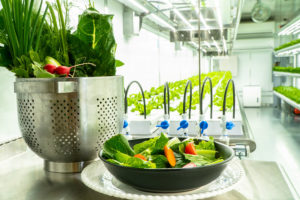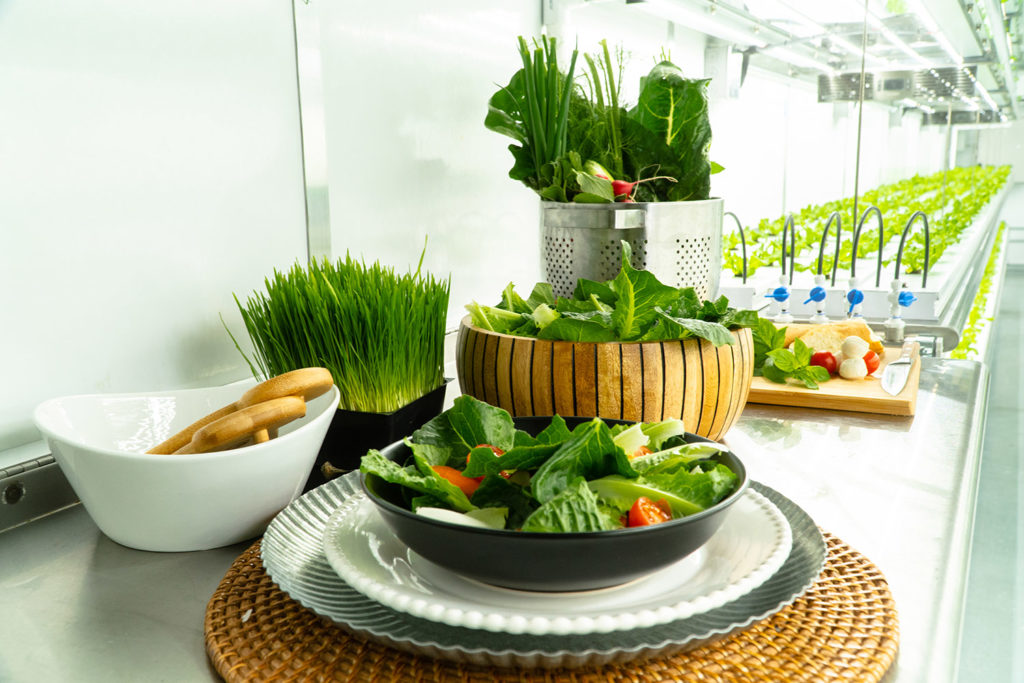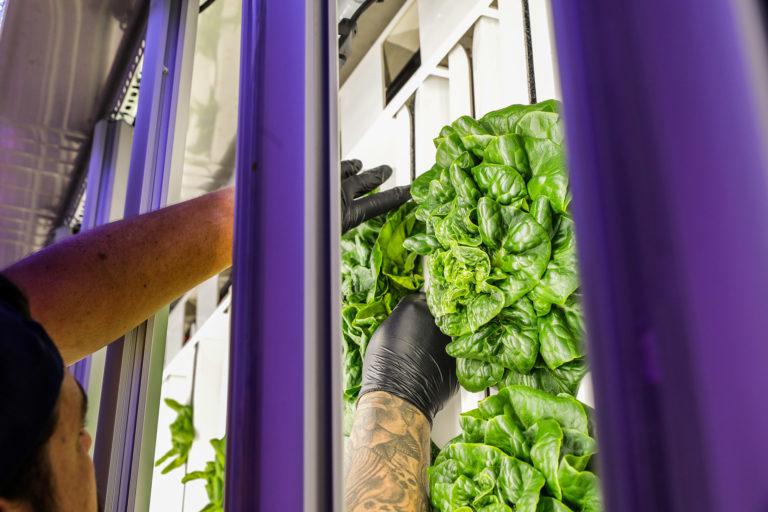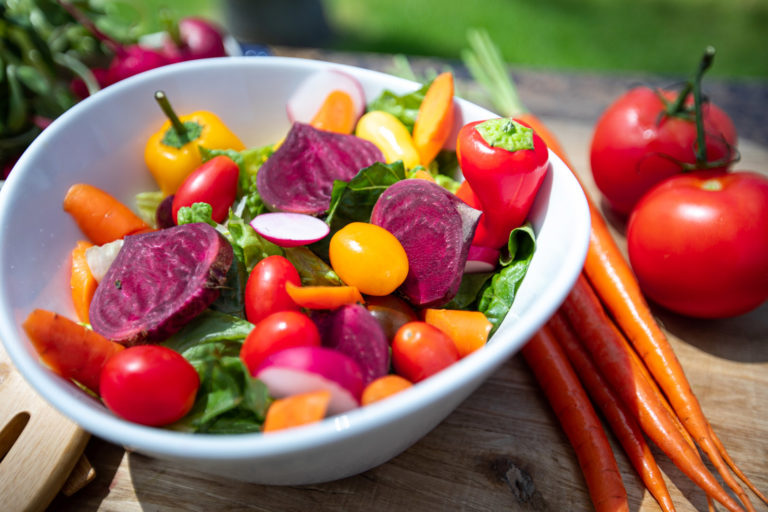Our world is changing. Food travels thousands of miles to our plates. We are short on space, energy and freshwater. And yet there are more people and more and more of us are eating unhealthily. Across the world obesity is a pandemic disease. Vertical farming could be the solution.
Put simply, vertical farming is the practice of growing crops in vertically stacked layers. By its nature, it’s usually an indoor technique and vertical farms can be set up in aircraft hangars, warehouses, shipping containers, tunnels, abandoned mine shafts, even abandoned subway stations! It usually involves growing plants in artificial light and without soil by giving plant roots direct access to nutrients – what’s today called hydroponics.
NASA experiments
NASA started testing crop systems with shelves of hydroponic systems at the Kennedy Space Center in the 1980s. The engineers and scientists grew a diverse range of crops, including wheat, soy beans, potatoes, lettuce, tomatoes and even attempted rice. The idea then was to establish if such a system could be used to feed astronauts on long space missions. The answer was affirmative, but the space missions never materialized.
Technology has moved on since then. NASA grew plants using high-pressure sodium lamps similar to the orange-colored street lights you see on many city blocks. These lights were far from efficient but these days there’s a huge range of LED and other systems available.

Light questions
The artificial light question is in fact critical and is the focus of much research in the vertical farming community. When you grow outside, as a traditional farmer, everything is up to Mother Nature and the farmer can merely make tweaks to the environment. Growing indoors is a whole new ballgame as the farmer controls every aspect, even what kind of light is used. The plant flavor can be maximized with the right balance of light, temperature,and nutrients.
The bitterness of kale can be changed to sweetness. Fruit flavor is highly dependent on the sunlight received which can give strawberries a real punch. Even the frequency of the light can be adjusted to include more blues or fewer yellows, which can also augment the flavor depending on the kind of crop and market the farmer is aiming for.
This might seem a technical even boring subject but if flavors of greens grown can be maximised, then we can start making eating healthier a much more attractive and easier proposition. Given that much of the developed world is literally groaning under the weight of an increasingly obese population, this can save lives as well as put less pressure on resources.
By their nature vertical farms also have tightly controlled, even hermetically sealed environments. The food is both fresh and incredibly clean, usually not even requiring pesticides- with no dirt or soil, there’s nowhere for bugs to hide. And of course, the farms can be anywhere. You need fresh strawberries in January in Alaska? Kale in Cairo? Fresh herbs picked the same day in Brooklyn? No problem.
Feed the World?
According to a 2018 USDA report, the Earth will need almost 70% more food, 30% more water and more than 50% more energy production by 2050. There is a huge gap between production capacity and consumption. Vertical farming alone won’t reach fill the gulf, but it will be a very important base for the challenge.
Across America, Vertical farming is on the increase. Plenty is opening a vertical farm in Compton, Los Angeles. Then there’s Bowery Farming and Farm One in New York, Buckeye Fresh in Ohio and Canadian Grocer in New Jersey.

The USDA Agricultural Research Service is also developing an interest in vertical farming’s promise. Especially risky crops grown outside include fruit from temperate climates like apples, pears and peaches. These fruits are highly seasonal, needing to lie dormant over winter which makes them susceptible to diseases and pests. Indoor growing is tricky as they have irregular sizes and frequently only grow from trees. Vertical farming’s control of the environment may make it possible to grow these fruits year-round and indoors.
Fresh farmed peaches any time of year may not sound like a revolution – but it might be the first step.



